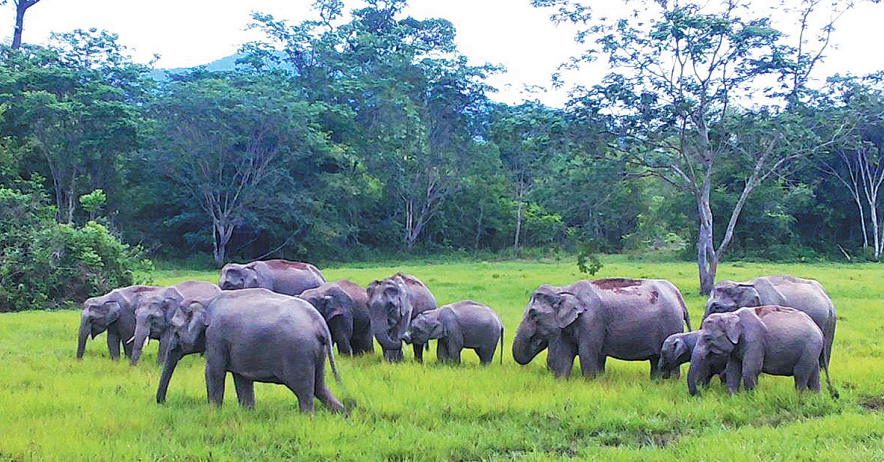Thais see 'elixir' as solution to human-elephant conflict


Editor's note: A project in eastern Thailand has been striving to strike a balance between wildlife and human communities. This page reviews how the initiative uses technology and traditional knowledge to protect the ecosystem inhabited by nearly 600 wild elephants, while crafting innovative solutions to mitigate conflict between these creatures and villagers.
Authorities start project to restore natural habitats of the gentle giants, hoping it will stop them from going to farmland and houses to forage for food
Hidden in the forest of Chachoengsao Province in eastern Thailand, a compound of several single-story houses is being guarded by crews of security guards. In one of these houses, Piyawan Unaha is closely watching the monitors for the appearance of Asian elephants.
Piyawan works at the Bajrasudha Gajanurak Command Center, an advance warning project to detect the activities of wild elephants in five eastern Thai provinces, namely Chachoengsao, Chon Buri, Rayong, Chanthaburi and Sa Kaeo. The provinces are home to nearly 600 wild elephants.
The project, initiated by the Thai royal family, aims to ease the conflict between local communities and wild elephants as the animals encroach upon farmland and houses to forage for food.
Limited food sources have forced wild elephants into such behavioral patterns, posing risks to both elephants and humans.
"The name of the project literally means 'an elixir that strengthens elephants to be as strong as diamonds'," Piyawan said. "It equally focuses on the welfare of both wild elephants and humans alike and strikes that delicate balance where both species can comfortably exist side by side."
The Thai king and queen have made personal contributions to establish the Gajanurak Fund, which supports the purchase of elephant surveillance equipment, alarm systems, radio communications systems and flashlights for volunteers tasked with alerting the villagers of any possible elephant confrontations, she said.
Forests in the five provinces are equipped with comprehensive elephant surveillance systems, helping to track and monitor elephant movements via automated cameras.
"When the surveillance system detects elephants, an alert signal will be sent via the Line chat app to local villagers and the volunteer team, tasked with returning the wild elephants to their natural habitat," Piyawan said.
The system currently involves pilot projects in eight villages, with an additional 43 villages within the network. All 51 villages in the network are affected by foraging wild elephants.
Statistics from Thailand's Department of National Parks, Wildlife and Plant Conservation show that the country now has about 3,000 to 5,000 wild elephants.
The elephant population has increased over the past decade, Thai nonprofit Human and Elephant Voices Network said.
























